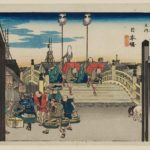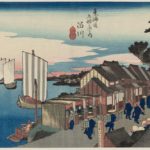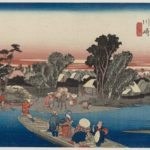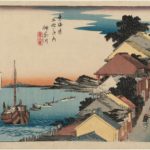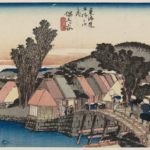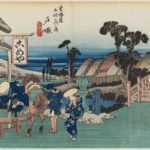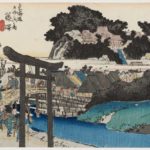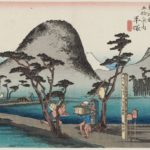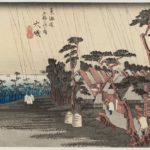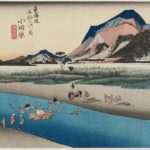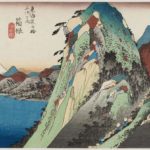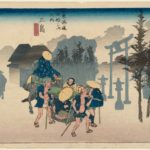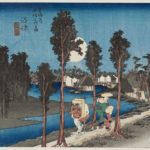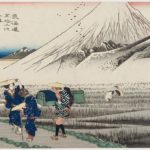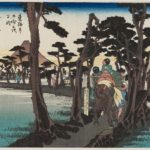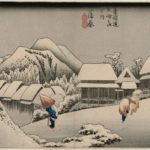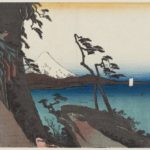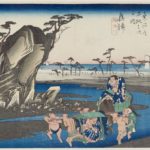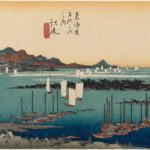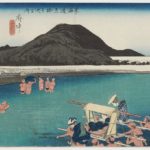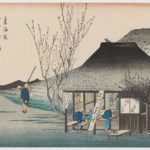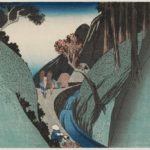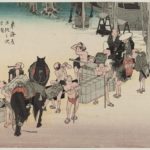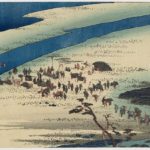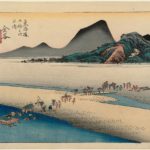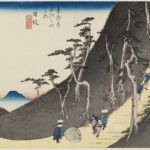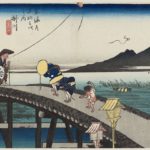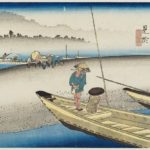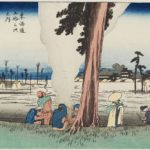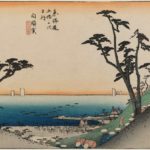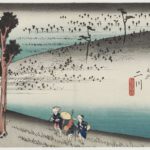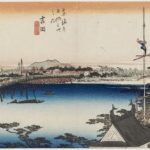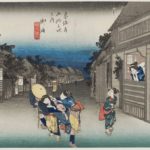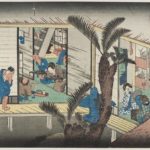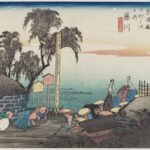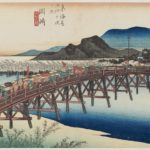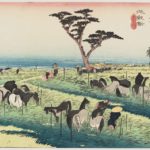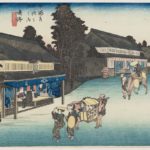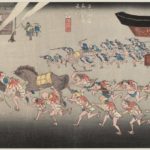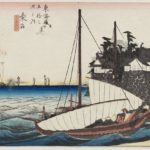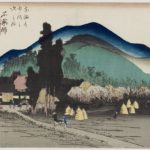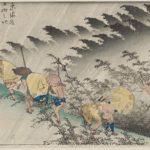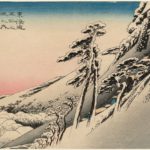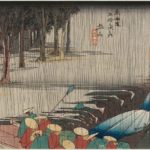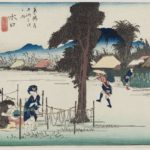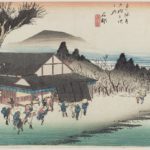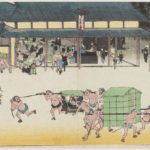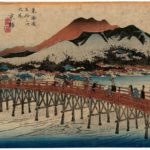Table of Contents
The masterpiece arts of Utagawa Hiroshige, “Fifty-Three Stages on the Tokaido”
Utagawa (Ando) Hiroshige led the field of landscape printing in ukiyo-e. Especially, “Fifty-Three Stages on the Tokaido” is one of the most highly regarded woodblock printings series in Japanese art.One of the famous landscape ukiyo-e woodblock prints
When he started to draw the paintings around 1833, “Thirty-Six Views of Mount Fuji” , by the most famous ukiyo-e artist Katsushika Hokusai, depicted the Japanese symbolic mountain was had dominated ukiyo-e market. Thanks in partly to the popularity of the landscape printings, “Fifty-Three Stages on the Tokaido” really rang the bell and he became the sought-after artist in Edo Period. It depicted the state of people and the views of post towns on Tokaido(Edo-Kyoto highway). The distance from Nihonbashi at the departure point to the end point Kyoto is around 500 km. The walking of Edo people for the distance took from 13 to 15 days. Before working with the series, Hiroshige joined the shogunate’s procession for presenting the horses to the Emperor from Edo to Kyoto and drew the rough sketches of the post towns. In the series of prints, No.15 ‘Kambara, the snow in the night’ (蒲原 夜之雪) and No.45 ‘Shono, the evening squall’ (庄野白雨) are the most famous artworks. Hiroshige drew various winter scenes of Japanese landscapes and ‘Kambara, the snow in the night’ represents the traditional landscape woodcut prints. Back to the page of Utagawa Hiroshige“Fifty-Three Stages on the Tokaido” for sale at Amazon
Books of “Fifty-Three Stages on the Tokaido”
Related posts:
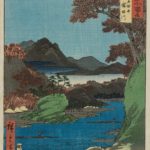 “Famous Views of the Sixty-odd Provinces” ukiyo-e art prints by Utagawa Hiroshige
“Famous Views of the Sixty-odd Provinces” ukiyo-e art prints by Utagawa Hiroshige
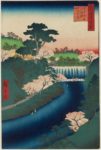 Utagawa Hiroshige’s prints, “One Hundred Famous Views of Edo” ukiyo-e artworks
Utagawa Hiroshige’s prints, “One Hundred Famous Views of Edo” ukiyo-e artworks
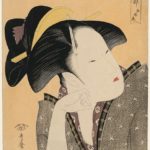 “Anthology of Poems: The Love Section” ukiyo-e art prints by Kitagawa Utamaro
“Anthology of Poems: The Love Section” ukiyo-e art prints by Kitagawa Utamaro
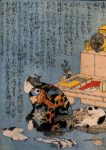 Utagawa Kuniyoshi:biography, ukiyo-e prints of samurai and other artworks
Utagawa Kuniyoshi:biography, ukiyo-e prints of samurai and other artworks
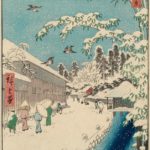 Utagawa Hiroshige’s snowy winter scenes ukiyo-e art woodblock prints
Utagawa Hiroshige’s snowy winter scenes ukiyo-e art woodblock prints
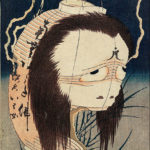 Hokusai’s horror ghosts artworks (ukiyo-e)
Hokusai’s horror ghosts artworks (ukiyo-e)

